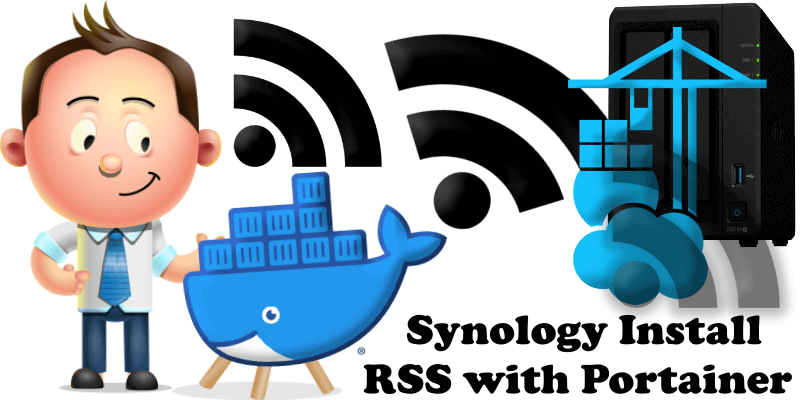
My previous guide for RSS involved the use of Task Scheduler. Today I’m offering a recommended and excellent alternative for installing the latest RSS version via Portainer. RSS is a simple RSS feed aggregator. It supports RSS and ATOM formats with regular auto-fetching of RSS feeds. Every hour by default, configurable down to 5 mins. In this step by step guide I will show you how to install RSS on your Synology NAS using Docker & Portainer.
This guide works perfectly with the latest RSS v1.6.2 release.
STEP 1
Please Support My work by Making a Donation.
STEP 2
Install Portainer using my step by step guide. If you already have Portainer installed on your Synology NAS, skip this STEP. Attention: Make sure you have installed the latest Portainer version.
STEP 3
Install Text Editor via Synology “Package Center”.
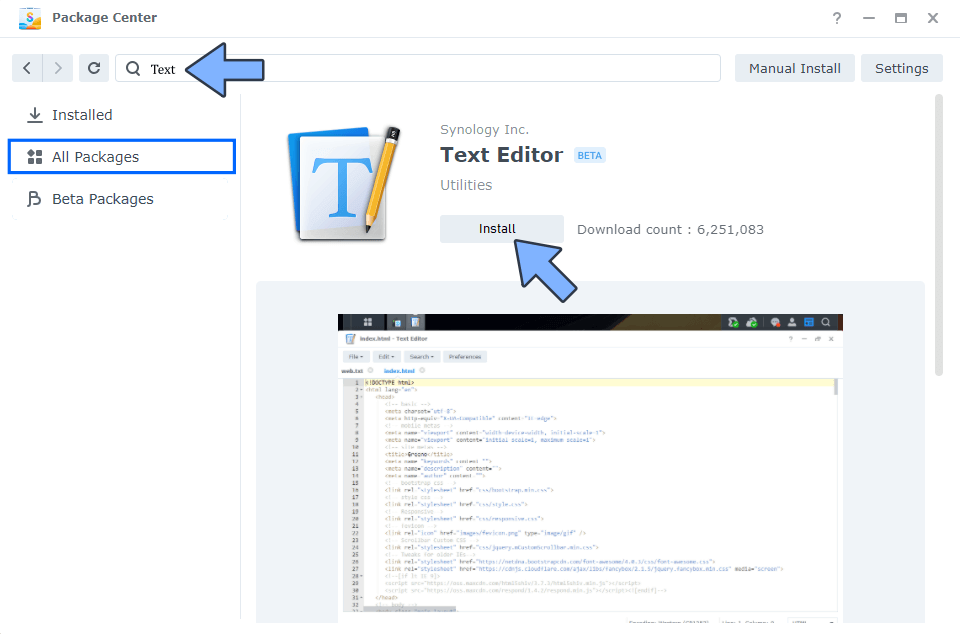
STEP 4
Go to File Station and open the docker folder. Inside the docker folder, create one new folder and name it rss. Follow the instructions in the image below.
Note: Be careful to enter only lowercase, not uppercase letters.

STEP 5
Log into Portainer using your username and password. On the left sidebar in Portainer, click on Home then Live connect. Follow the instructions in the image below.

On the left sidebar in Portainer, click on Stacks then + Add stack. Follow the instructions in the image below.

STEP 6
In the Name field type in rss. Follow the instructions in the image below.
services:
rss:
container_name: RSS
image: codeberg.org/danb/rss:latest
healthcheck:
test: timeout 10s bash -c ':> /dev/tcp/127.0.0.1/80' || exit 1
interval: 10s
timeout: 5s
retries: 3
start_period: 90s
volumes:
- /volume1/docker/rss:/app/storage:rw
ports:
- 6488:80
restart: on-failure:5
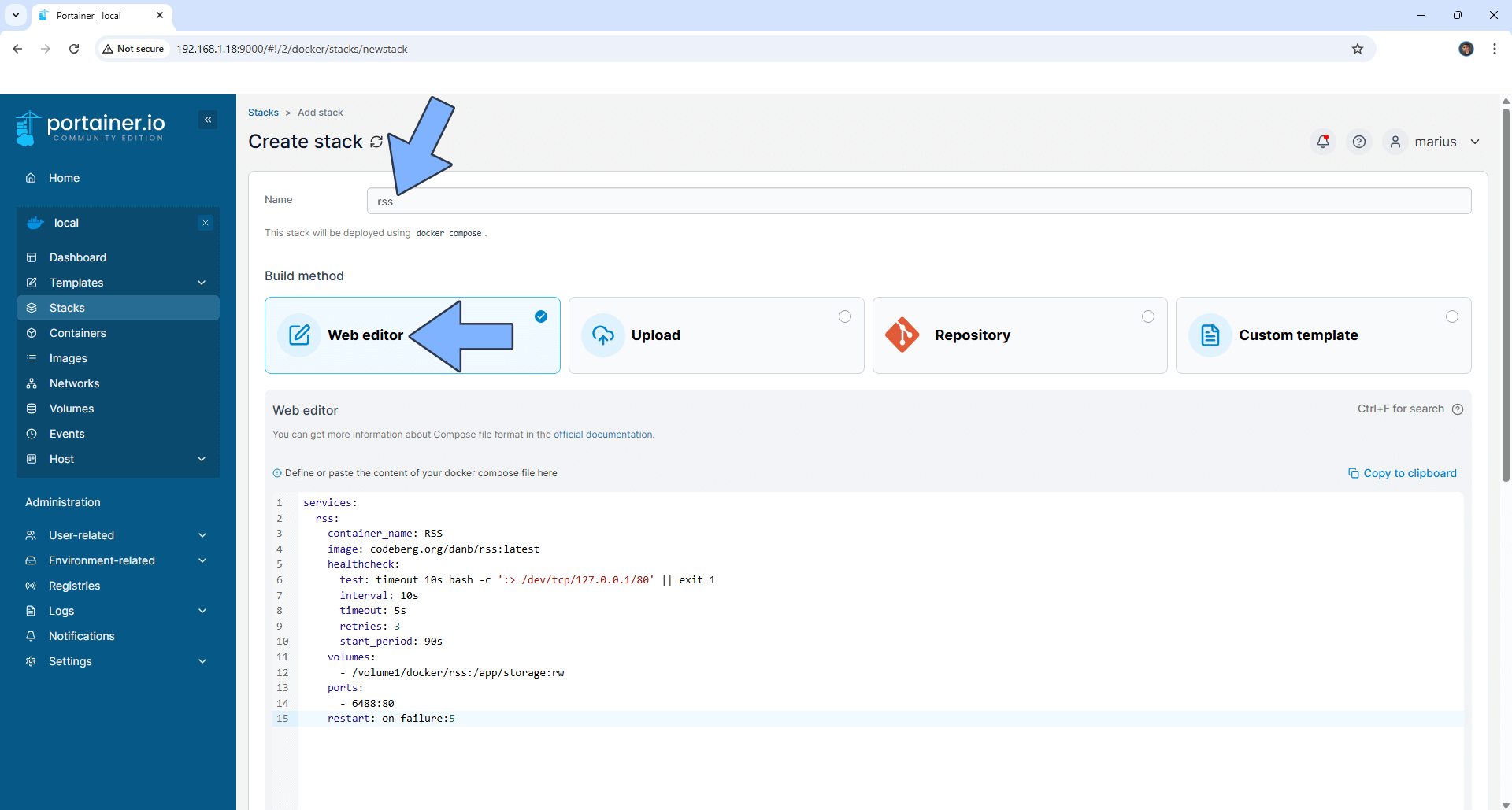
STEP 7
Scroll down on the page until you see a button named Deploy the stack. Click on it. Follow the instructions in the image below. The installation process can take up to a few minutes. It will depend on your Internet speed connection.

STEP 8
If everything goes right, you will see the following message at the top right of your screen: “Success Stack successfully deployed“.

STEP 9
The installation process can take up to a few seconds/minutes. It will depend on your Internet speed connection. Now open your rss folder that you have previously created at STEP 4. Double click on the feeds.txt file. Add your favorite website RSS feed link and a description. Click X to save the settings. Note: The description is mandatory. Note: You can add multiple website rss feeds, link and description, in the next line (one website with description per line). Follow the instructions in the image below.
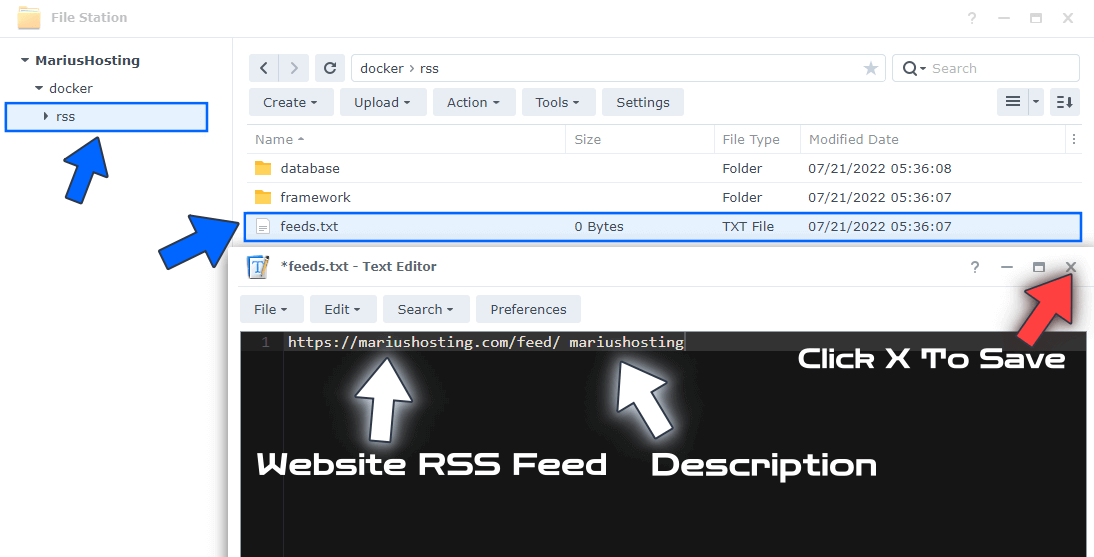
STEP 10
🟢Please Support My work by Making a Donation. Almost 99,9% of the people that install something using my guides forget to support my work, or just ignore STEP 1. I’ve been very honest about this aspect of my work since the beginning: I don’t run any ADS, I don’t require subscriptions, paid or otherwise, I don’t collect IPs, emails, and I don’t have any referral links from Amazon or other merchants. I also don’t have any POP-UPs or COOKIES. I have repeatedly been told over the years how much I have contributed to the community. It’s something I love doing and have been honest about my passion since the beginning. But I also Need The Community to Support me Back to be able to continue doing this work.
STEP 11
The installation process can take up to a few seconds/minutes. It will depend on your Internet speed connection. Now open your browser and type in http://Synology-ip-address:6488
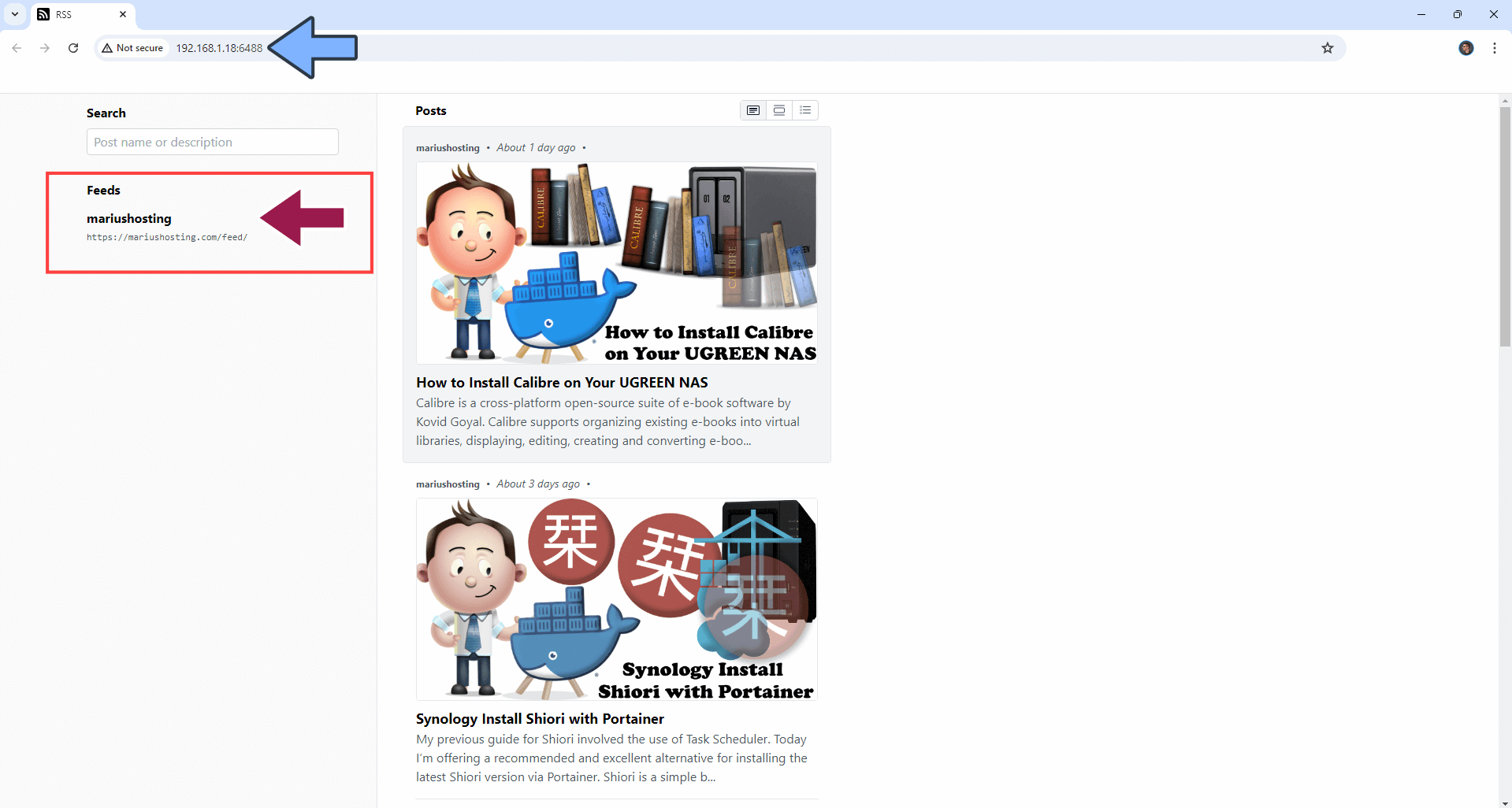
Enjoy RSS!
If you encounter issues by using this container, make sure to check out the Common Docker issues article.
Note: If you want to run the RSS container over HTTPS, check How to Run Docker Containers Over HTTPS. In order to make RSS work via HTTPS, it’s mandatory to activate WebSocket.
Note: Can I run Docker on my Synology NAS? See the supported models.
Note: How to Back Up Docker Containers on your Synology NAS.
Note: Find out how to update the RSS container with the latest image.
Note: How to Free Disk Space on Your NAS if You Run Docker.
Note: How to Schedule Start & Stop For Docker Containers.
Note: How to Activate Email Notifications.
Note: How to Add Access Control Profile on Your NAS.
Note: How to Change Docker Containers Restart Policy.
Note: How to Use Docker Containers With VPN.
Note: Convert Docker Run Into Docker Compose.
Note: How to Clean Docker.
Note: How to Clean Docker Automatically.
Note: Best Practices When Using Docker and DDNS.
Note: Some Docker Containers Need WebSocket.
Note: Find out the Best NAS Models For Docker.
Note: Activate Gmail SMTP For Docker Containers.
This post was updated on Wednesday / November 5th, 2025 at 12:37 AM
